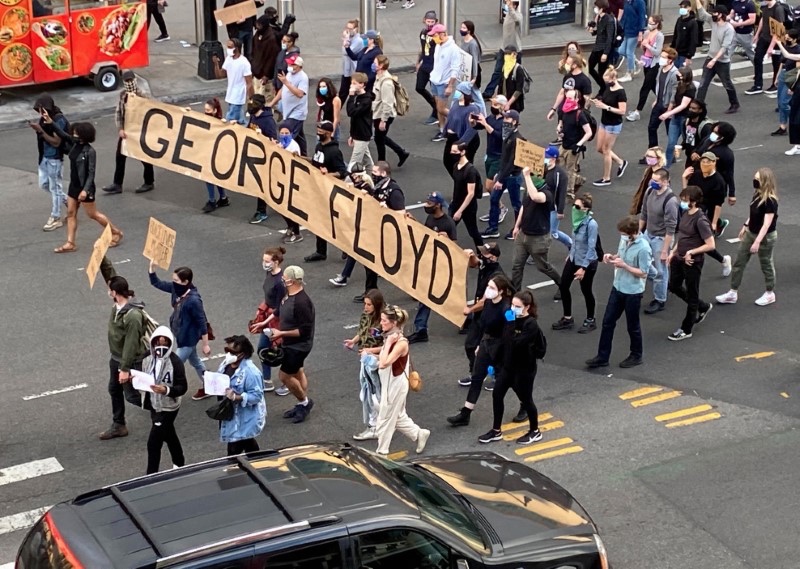Washington, DC
Thomson Reuters Foundation
Protests over the death of George Floyd, an unarmed black man who died while in police custody in Minneapolis last week, have spread to dozens of cities in the United States and other world cities.
Floyd’s death, at the hands of a white police officer who knelt on his neck for nearly nine minutes, has reignited anger over longstanding social and economic inequality between the country’s white and black communities.

Protesters march to demonstrate against the death in Minneapolis police custody of George Floyd, on Flatbush Avenue in Brooklyn toward the Manhattan Bridge, New York, US, on 1st June. PICTURE: Reuters/Jonathan Oatis
More than 40 million black people live in the United States, making up about 13 per cent of the nation’s population.
From education to home ownership, here are eleven statistics that show inequality among black and white Americans:
• Black adults, especially black men, are far more likely to end up in jail than white adults. In 2018, there were 1,501 black prisoners for every 100,000 black adults – more than five times the rate among whites.
• About three in every five black men say they have been unfairly stopped by the police because of their race, according to a 2019 survey by the Pew Research Center. Also, about eight in every ten black people, with at least some college education, say they have been discriminated against because of their race.
• The home ownership gap between blacks and whites has widened since 2004 and black families are less likely than white families to own their own house. Today, 41 per cent of black households own their own homes, compared with nearly 72 per cent for whites.
• Black households have only 10 cents in wealth for every dollar held by white households, according to 2016 data. In 2016, the median wealth of non-Hispanic white households was $US171,000 – 10 times the wealth of black households ($US17,100).
• COVID-19 has disproportionately affected black men and women in terms of deaths from the disease and unemployment rates during the pandemic.
• By the end of May, the COVID-19 mortality rate for black Americans (one in 1,850) was 2.4 times as high as the rate for white Americans (one in 4,400).
• In April, the black unemployment rate was nearly 17 per cent compared with a white unemployment rate of 14 per cent.
• Over the past two decades, the wage gap between black and white workers has grown significantly. For example, in 2018 the median weekly earnings for full-time workers was $US694 for black Americans, compared to $US916 for white Americans.
• In 2017, black women earned less than white women, with the median annual earnings for full-time black women workers was just over $US36,000 – 21 per cent lower than that of white women.
• Black women in the United States are more than three times as likely to die from pregnancy-related causes than white women.
• Black students are less likely to graduate from high school than white students. In 2018, 79 per cent of black students graduated from high school in comparison to 89 per cent among white students.
SOURCES: Pew Research Center; Centers for Disease Control and Prevention; The Economic Policy Institute; APM Research Lab; US Bureau of Labor Statistics.






